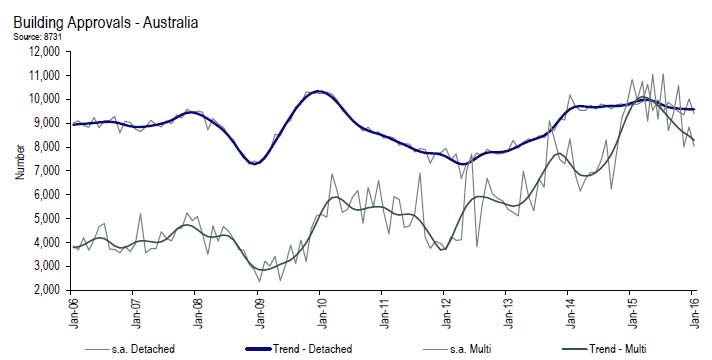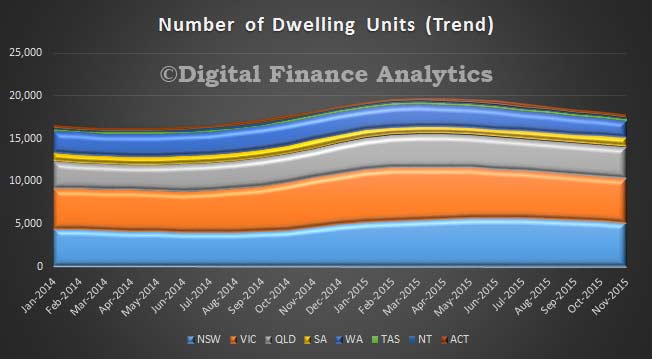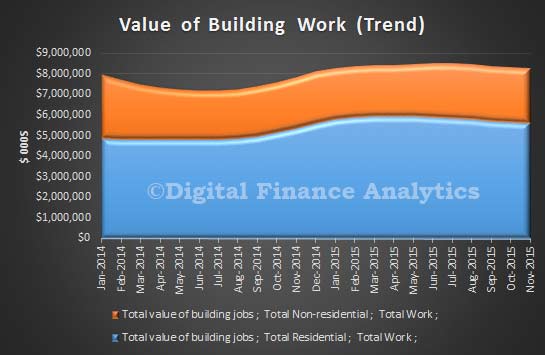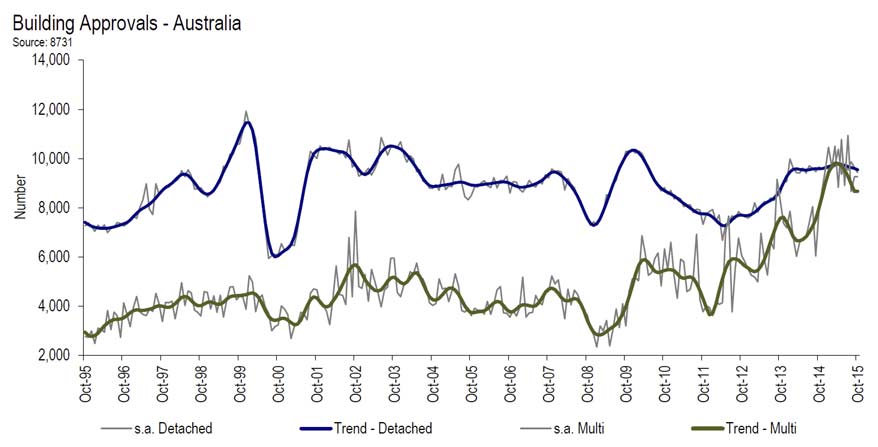The number of dwellings approved rose 0.2 per cent in July 2016, in trend terms, and has now risen for eight months, according to data released by the Australian Bureau of Statistics (ABS) today. The number of units rose, whilst the number of houses fell.
Dwelling approvals increased in July in New South Wales (2.4 per cent) and Victoria (0.5 per cent) but decreased in Tasmania (3.7 per cent), Northern Territory (3.2 per cent), Australian Capital Territory (2.6 per cent), Queensland (1.8 per cent), South Australia (1.8 per cent) and Western Australia (1.8 per cent) in trend terms.
In trend terms, approvals for private sector houses fell 0.5 per cent in July. Private sector house approvals fell in South Australia (1.6 per cent), Western Australia (1.5 per cent) and Victoria (1.1 per cent). Private sector house approvals rose in Queensland (0.8 per cent) and were flat in New South Wales.
In seasonally adjusted terms, total dwelling approvals increased 11.3 per cent, driven by a rise in total other residential dwelling approvals (23.4 per cent). Total house approvals fell 0.6 per cent.
The value of total building approved rose 1.9 per cent in July, in trend terms, and has risen for seven months. The value of residential building rose 0.9 per cent, while non-residential building rose 3.9 per cent.

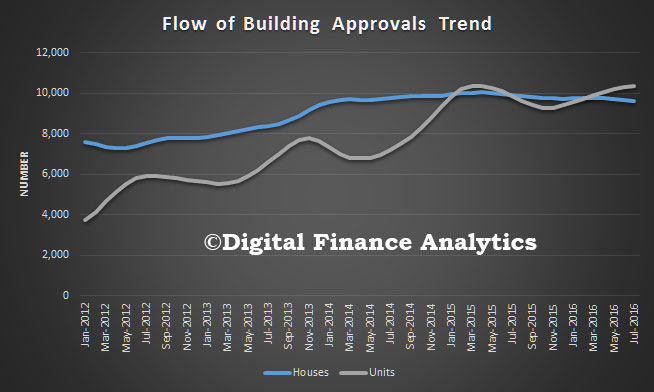
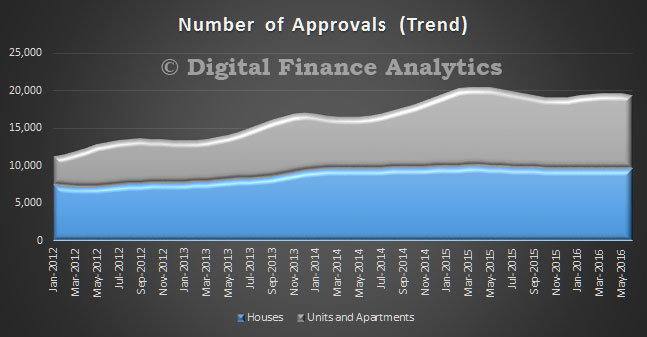

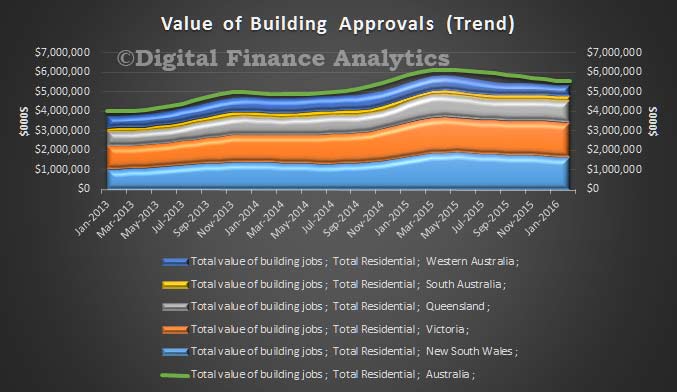 The trend estimate of the value of total building approved fell 0.8% in February and has fallen for seven months. The value of residential building fell 0.7% and has fallen for 10 months. The value of non-residential building fell 1.2% and has fallen for six months.
The trend estimate of the value of total building approved fell 0.8% in February and has fallen for seven months. The value of residential building fell 0.7% and has fallen for 10 months. The value of non-residential building fell 1.2% and has fallen for six months.